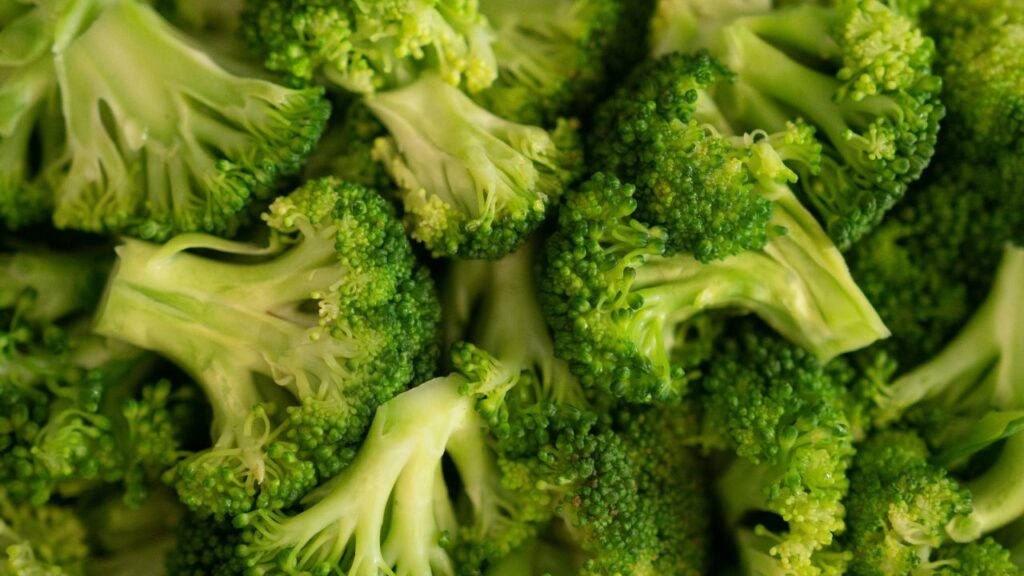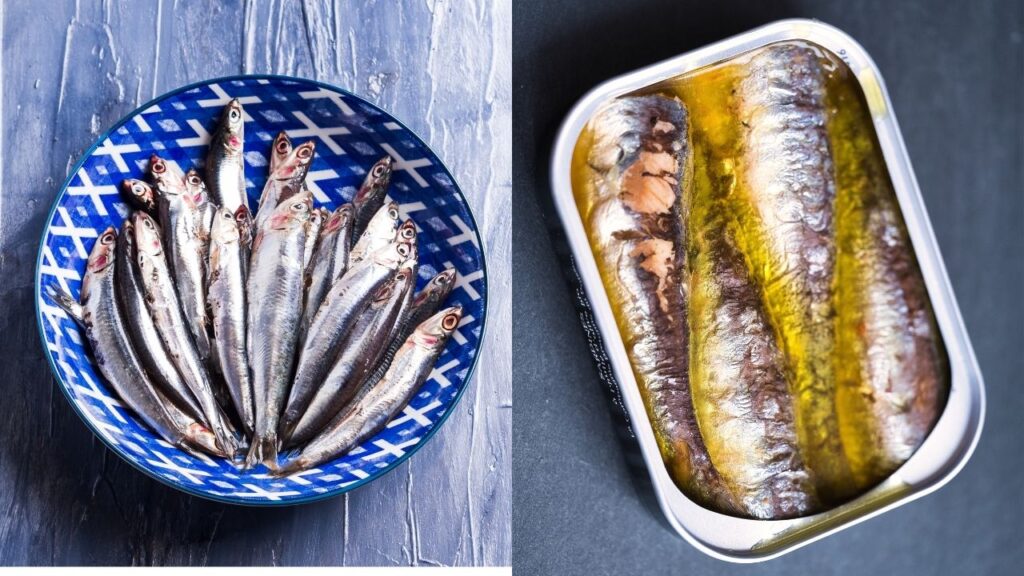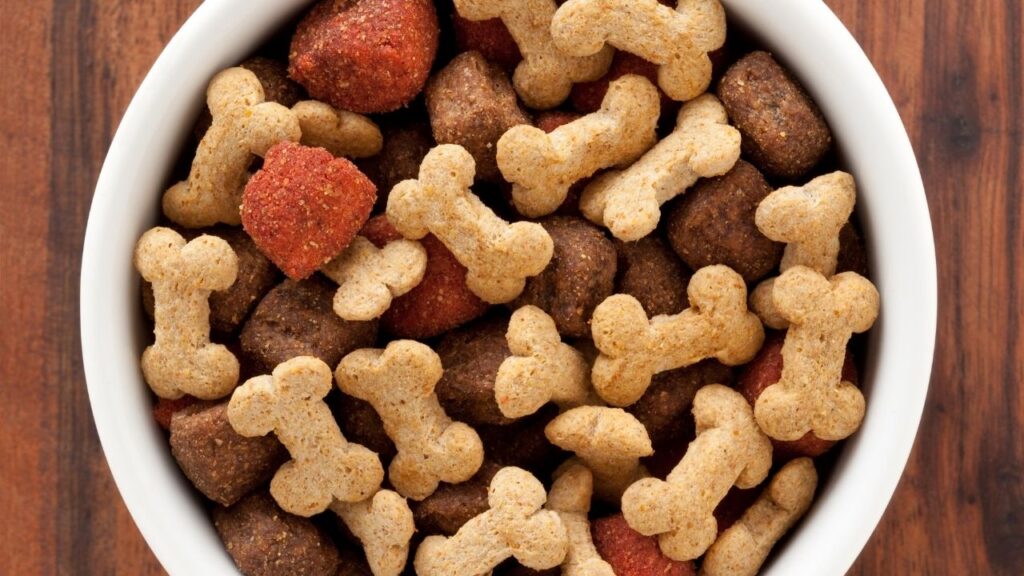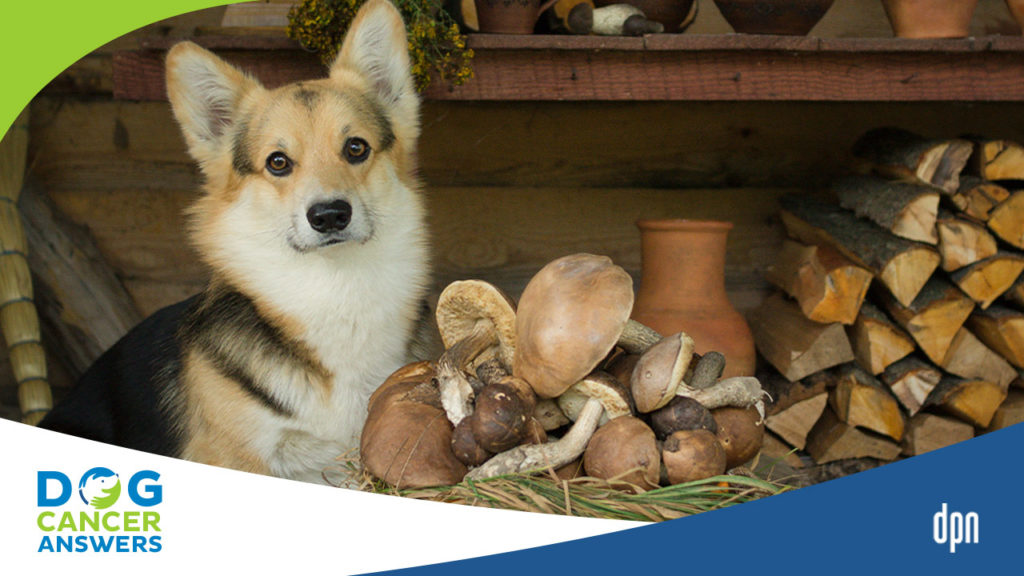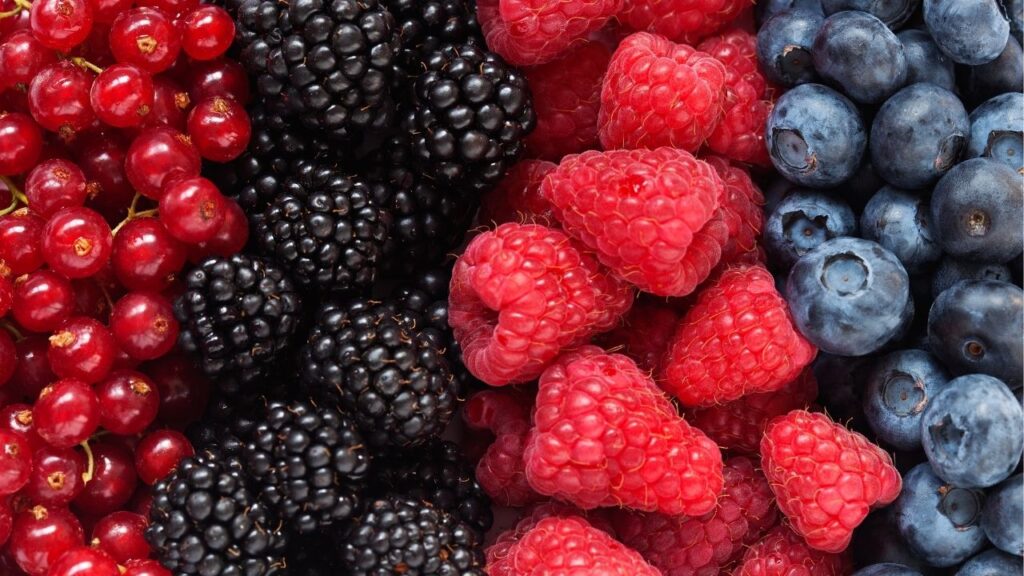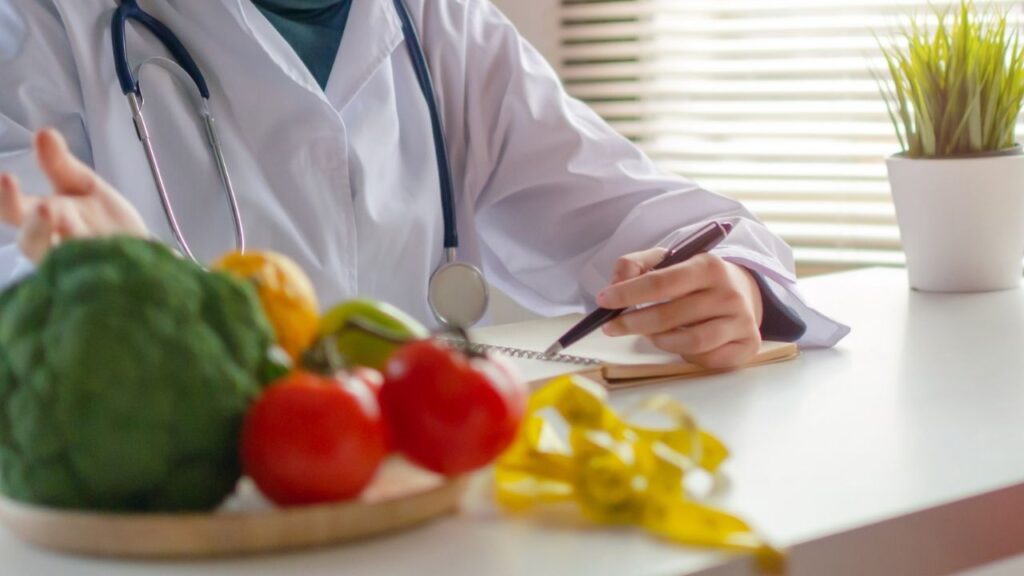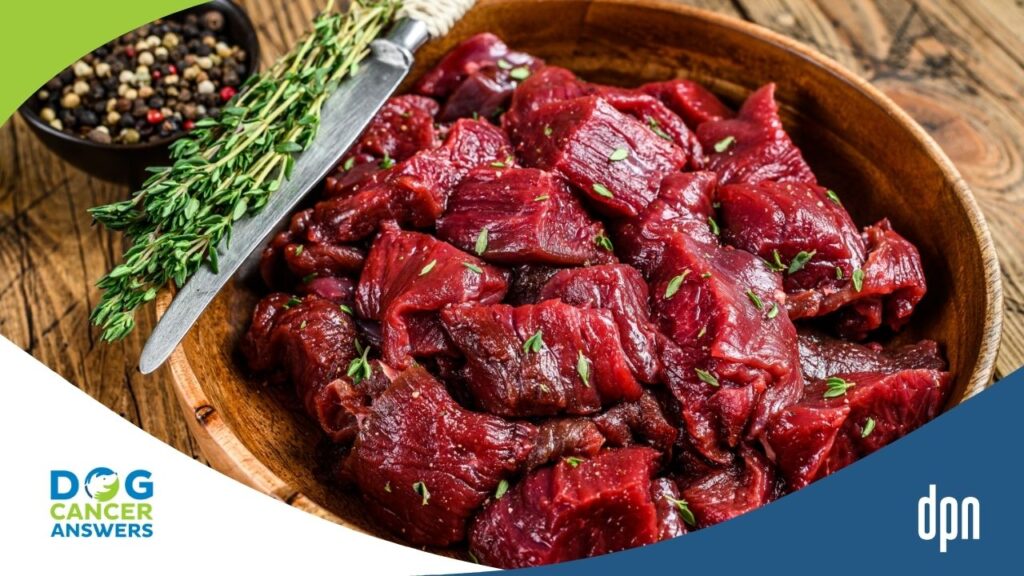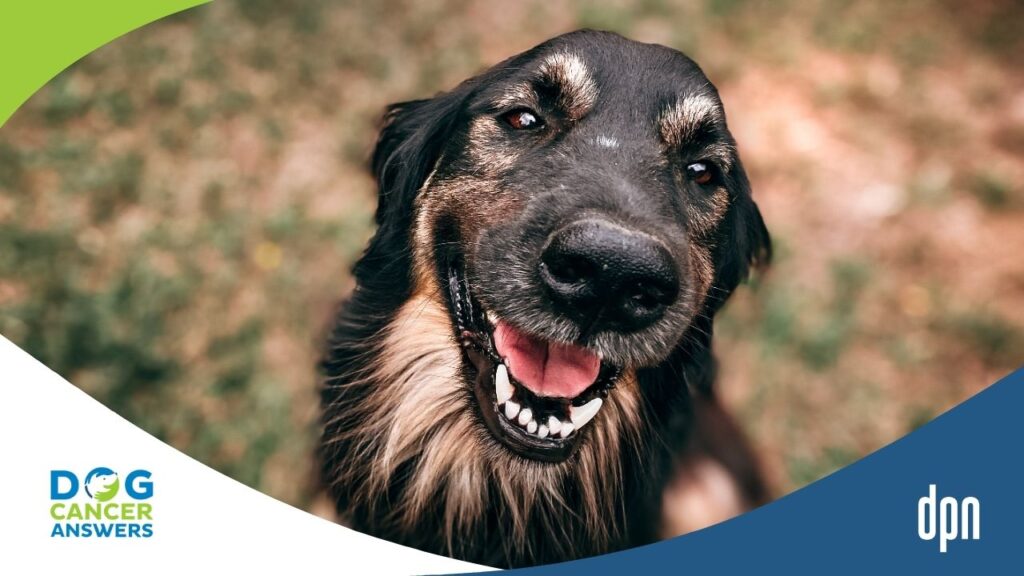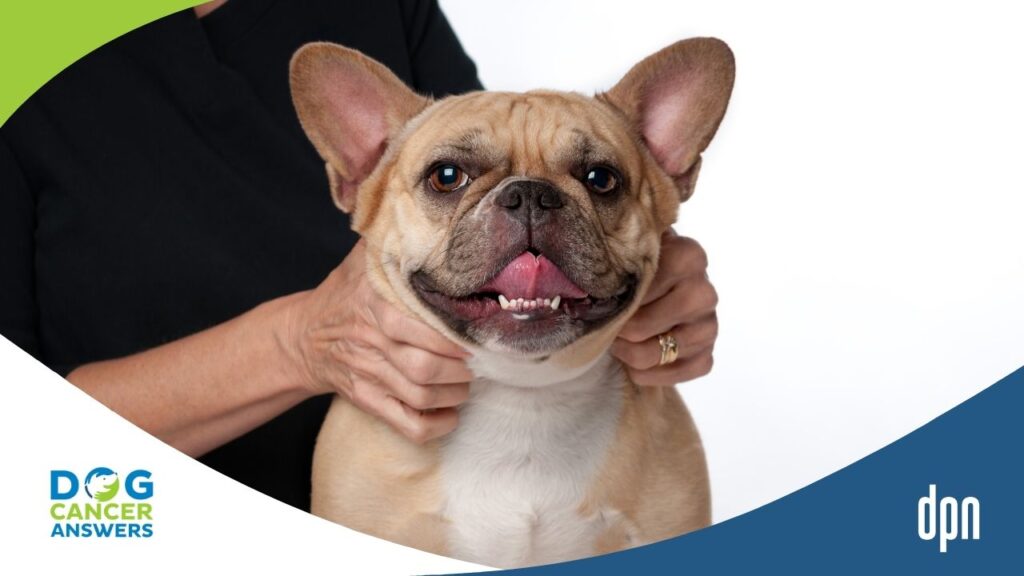EPISODE 214 | RELEASED May 1, 2023
The Best and Worst Foods for Dog Cancer | Dr. Susan Recker
Food is medicine! Veterinarian Susan Recker recommends the best foods for dogs with cancer and food types to avoid for these pups.
SHOW NOTES
Dr. Susan Recker is a veterinarian with a passion for nutrition. In this episode, she recommends four foods that can benefit any dog with cancer and six things to avoid when choosing foods for your dog.
The best foods for dog cancer are sardines, mushrooms, cruciferous veggies, and berries. Listen in to learn how these foods can benefit your dog, how much to feed, and how often to feed.
Foods to avoid are foods cooked at high heat, artificial preservatives, rancid fats, artificial coloring, GMOs (but not for the reason you might think), and excessive omega-6 fatty acids. Listen in to learn more about these potentially detrimental compounds and how you can cut them out of your dog’s diet.
Links Mentioned in Today’s Show:
Animal Diet Formulator: https://animaldietformulator.com/
[00:00:00] >> Dr. Susan Recker: This isn’t all or nothing. It’s not you have to do everything perfectly or don’t bother. It’s not that at all. It’s every small change that you make for the better adds up, it’s cumulative, and you have made a benefit for your dog with every blueberry you feed.
[00:00:17] >> Announcer: Welcome to Dog Cancer Answers, where we help you help your dog with cancer.
[00:00:23] >> Molly Jacobson: Hello, friend. I’m Molly Jacobson, and today on Dog Cancer Answers, we’re talking about one of my all-time favorite topics, food. As a food writer, this is a topic near and dear to my heart, and we have fellow foodie on with us, Dr. Susan Recker. Dr. Susan Recker is a veterinarian, she’s an animal diet formulator, and a member of our editorial team on dogcancer.com.
We’ve asked her what her favorite foods are to help support dogs with cancer, and also the top foods she recommends avoiding because almost everybody changes their dog’s diet once they find out that their dog has cancer. It’s a totally normal and reasonable thing to want to do when you’re looking for something to control on a day-to-day basis in a situation that too often feels very out of control. So we’re really looking forward to talking to Dr. Recker.
Dr. Recker, thank you for joining us today.
[00:01:25] >> Dr. Susan Recker: It is my pleasure. Thanks for having me. I love talking about food. I love eating food. So this is, this is gonna be fun.
[00:01:31] >> Molly Jacobson: I anticipate it will, and I’m sure it’s, as you said before we started recording, it’s an endless conversation about food.
[00:01:39] >> Dr. Susan Recker: Yes it is. Yes it is.
[00:01:40] >> Molly Jacobson: Yes.
[00:01:40] >> Dr. Susan Recker: I mean, we have to eat every day, right? So we’re, and we’re constantly learning new things. So the conversation about food will just never end.
[00:01:47] >> Molly Jacobson: It will never end. And we’ll have you back, I’m certain, in the future. Today we wanted to talk about sort of a high level picture of dogs with cancer and foods that people can feed them, that they should feed them, and that they shouldn’t feed them. Sort of like the top of the list and the bottom of the list.
I don’t know, the top offending foods and the top go for it foods. Because there’s so many people who, whether they can afford the time or money to do a, a home cooked diet, or whether they’re sticking to a prescription diet from their doctor or they don’t do any dietary changes at all, they still wanna give their dogs something special to eat, to sort of say I love you and I want you to feel better, and hopefully to give them a nutrition boost.
So I wanted to sort of attack this topic right from that perspective of like, what can diet do for dogs with cancer and what can’t it do?
[00:02:44] >> Dr. Susan Recker: Wow, that’s such a good question. You know, over the course of my veterinary career, I came to understand that food can be medicine. You know, food can do a lot. Food can nourish the body, food can give it all the building blocks it needs to run its processes properly. And so that’s true in health and it’s certainly true if there’s a disease state going on, like cancer.
And while I don’t think that food is going to cure cancer, I think that it plays a really nice supporting role in how we can help our dogs manage that time of their life and manage treatment from cancer, help their bodies have a leg up just to let their bodies do what they naturally wanna do to fight cancer and just to be healthy in general.
So, a lot of foods have medicinal properties, and I say that to mean that they contain all sorts of, of course vitamins and minerals, but also, you know, plants have a lot of phytonutrients that are bioactive that can play a role in being a catalyst or supporting, say, immune function or something like that.
So some of the foods that you’ll hear called superfoods are superfoods because sure, their nutrient content is fantastic and their nutrient profile is great, but also they have some extra special little prizes tucked inside that really help our dogs’ bodies do what they need to do.
[00:04:05] >> Molly Jacobson: And those are, you just said phytonutrients. Can you break that down a little bit, in plain language?
[00:04:10] >> Dr. Susan Recker: Yes. So, plain language, phytonutrients pretty much just means good stuff found in plants.
[00:04:16] >> Molly Jacobson: Ah.
[00:04:16] >> Dr. Susan Recker: So, you know, when doctors tell us to eat a, a diet rich in fruits and vegetables, it’s because those plants have some compounds in them, these phytonutrients, that we just can’t get anywhere else because they are, by definition, in plants. And so we know that our dogs, you know, need protein. Their diet has to be rich in protein, which is coming primarily from animal sources, but there is protein in plant sources.
But we do need to, to make sure that we tuck in some of those add-ons to their diet that have those phytonutrients in them to provide them with those things that, uh, meat’s great and meat’s important for our dogs, but it doesn’t have everything in it that they need.
[00:04:56] >> Molly Jacobson: Okay. And you also said another word, bioactive. Can you explain what that means?
[00:05:01] >> Dr. Susan Recker: Yeah, so bio, you know, the body, biology, and active, so that’s just any compound that’s in food that has an action in the body.
[00:05:10] >> Molly Jacobson: Ah.
[00:05:11] >> Dr. Susan Recker: So bioactives can be positive or bioactives can be negative, and of course we wanna harness those positive bioactives that are going to bring about some positive interaction or action within the body.
[00:05:23] >> Molly Jacobson: Okay. So my guess is that when we ask you to name some foods that you should be feeding your dog with cancer, they’re going to be packed with phytonutrients that are bioactive in a positive direction.
[00:05:37] >> Dr. Susan Recker: You are right. Not all of them on my list are plants, so, so some other foods have other bioactives that aren’t necessarily phytonutrients because they’re not coming from plants.
[00:05:48] >> Molly Jacobson: A-ha.
[00:05:49] >> Dr. Susan Recker: But certainly contain other bioactives that are important.
[00:05:52] >> Molly Jacobson: Okay, great. Well, let’s skip to the nitty gritty. I’d like to hear about the foods that you recommend and then also a little bit about things like how much to feed and are these just toppers on top of your regular food or how to give them to your dog.
[00:06:07] >> Dr. Susan Recker: Okay. Well, if I’m pressed to pick my top choice, I think it’s going to have to be sardines. Yes.
[00:06:15] >> Molly Jacobson: Yay!
[00:06:18] >> Dr. Susan Recker: I sense some enthusiasm.
[00:06:20] >> Molly Jacobson: I am speaking on behalf of dogs.
[00:06:21] >> Dr. Susan Recker: Yes. Yeah. Yes. And that’s the other good thing, most dogs really like them. So they’re very palatable. They’re yummy, they’re delicious. So Molly’s excited, dogs are excited, I’m excited, we’re all excited about sardines. So sardines and fish in general are excellent sources of omega-3 fatty acids, which are important. They play a lot of roles in the body. They’re part of membrane health, so really every cell in our body needs omega-3 fatty acids to do what it needs to do.
[00:06:53] >> Molly Jacobson: Ah.
[00:06:54] >> Dr. Susan Recker: And they have been shown to have a beneficial effect in cancer. So omega-3 fatty acids are a good thing to load up in your dog’s diet. Fish are a great source. There are omega-3 fatty acids in some plants also, but the omega-3s in marine sources, so fish and things that come from the water, are more bioavailable to dogs than our plant sources of omega-3s. So fish are a good source.
[00:07:22] >> Molly Jacobson: Okay. And bioavailable means easy for the body to absorb.
[00:07:26] >> Dr. Susan Recker: Exactly. Exactly.
[00:07:28] >> Molly Jacobson: Okay.
[00:07:28] >> Dr. Susan Recker: Yeah.
[00:07:29] >> Molly Jacobson: Okay.
[00:07:29] >> Dr. Susan Recker: And small fish are a good area to concentrate on because those small fish are at the bottom of the food chain as compared to a larger fish like, say, tuna or something like that, which has been eating more of those critters that are on the other end of the food chain. And so they tend to accumulate toxins like mercury and other things like that. So sardines are small fish, so we minimize their toxin load and maximize the omega-3 dose that we’re giving our dogs through those sardines.
[00:08:00] >> Molly Jacobson: The higher you go up the food chain, on and off, on land and in the sea, the more likely those animals are to pack toxins.
[00:08:08] >> Dr. Susan Recker: Yeah, exactly.
[00:08:10] >> Molly Jacobson: Okay, so small fish, sardines. I know people are gonna wanna know: packed in oil, packed in water? Does it matter?
[00:08:17] >> Dr. Susan Recker: Packed in water is preferable.
[00:08:19] >> Molly Jacobson: Okay.
[00:08:20] >> Dr. Susan Recker: But if you have access to sardines that are packed in olive oil, that is an option as well.
[00:08:26] >> Molly Jacobson: Okay.
[00:08:26] >> Dr. Susan Recker: You just need to be a little more careful if your dog has difficulty with fat. So if your dog’s not used to a high fat meal and you give sardines packed in olive oil, that’s quite a bit of fat right at once, and that could cause some GI upset, things like diarrhea or vomiting, if your dog’s not used to them.
So if that’s the case, start very small. Just like a bite and then work up from there. But if it’s sardines packed in water, you can be a little bit more generous with your serving of sardines. And one typical sardine, which is, you know, I don’t know, three to four inches in length, in, in a can would be appropriate for say a 20 pound dog.
[00:09:05] >> Molly Jacobson: Okay.
[00:09:05] >> Dr. Susan Recker: And if you were to do that maybe three times a week, that would give a really nice omega-3 boost to your dog.
[00:09:13] >> Molly Jacobson: Well, that’s a very helpful guideline. Now what about, I know another question, ’cause people who don’t eat sardines can be very intimidated. And in my opinion, it’s something I’ve learned to love because my husband loves sardines and I had to learn to love them. But I don’t think I quite love them yet. But I do recognize their nutritional profile.
I should love them.
So boneless, skinless? What’s the best? What would you recommend for a dog?
[00:09:41] >> Dr. Susan Recker: I think the most available in canned form is, is whole sardines that still have bones and skin. And the nice thing is they’re small little critters and they have really small bones that are pretty soft. So the bones that are in sardines are generally not any sort of a hazard for dogs. They’re not sharp and pokey. They’re not going to splinter and cause GI perforation. They’re nice and soft, they’re chewable, they’re digestible. So dogs do just fine with that, and with the skin as well.
[00:10:12] >> Molly Jacobson: Okay. And I imagine that there’s lots of minerals and yummy things for the body in those skin and bones, I mean.
[00:10:20] >> Dr. Susan Recker: Absolutely. Yes.
[00:10:22] >> Molly Jacobson: We all should be eating nose to tail really, I think, right?
[00:10:26] >> Dr. Susan Recker: Yeah, definitely. Yes. The sardines are a great source of omega-3s, but they’re also a great source of vitamin D as well as vitamin B12. So they have a lot of good stuff going for them. The omega-3s are kind of our, our target for this discussion today, but there’s a a lot of other good stuff in there and they’re a great source of protein as well.
[00:10:45] >> Molly Jacobson: Okay, great. So this is something, three times a week, one sardine for a 20 pound dog, and you can go up and down from there.
[00:10:54] >> Dr. Susan Recker: Yep, exactly.
[00:10:55] >> Molly Jacobson: That would be a really nice addition to whatever else you’re giving your dog for food.
[00:10:59] >> Dr. Susan Recker: Yes. Yeah. That would make a great topper.
[00:11:02] >> Molly Jacobson: Great. Real treat for your dog. Your dog will look forward to those sardine days.
[00:11:06] >> Dr. Susan Recker: Absolutely. Absolutely. My dog and my cats both love them.
[00:11:11] >> Molly Jacobson: Well, yes. Yes. Um, what else should we be putting on that list of things to give our dogs with cancer?
[00:11:21] >> Dr. Susan Recker: So my number two on the list is mushrooms.
[00:11:24] >> Molly Jacobson: Oh.
[00:11:24] >> Dr. Susan Recker: Mushrooms. Yes. Yes. And when I say mushrooms, I mean any culinary or medicinal mushrooms. So that means anything that’s safe for you or me to eat. So if we go to the grocery store or the farmer’s market and we buy mushrooms that we would cook and eat for ourselves, those are safe for our dogs too.
[00:11:43] >> Molly Jacobson: Okay.
[00:11:44] >> Dr. Susan Recker: It is not safe to let your dog go forage in the backyard and find wild mushrooms. Do not do that. Um.
[00:11:51] >> Molly Jacobson: Right.
[00:11:51] >> Dr. Susan Recker: But, but any culinary mushrooms that you would eat are safe for your dog. So button mushrooms, cremini mushrooms, oyster mushrooms, shiitake, maitake, but also some of the other lesser known varieties that are considered medicinal mushrooms. So, you know, turkey tail is a, a good one. Chaga is another one. And many of those mushrooms have been demonstrated to have super great effects for the immune system.
Turkey tail in particular, there’s a study that showed that dogs with hemangiosarcoma lived more than a year past their prognostic date survival time with a turkey tail supplement. So there’s supplement forms of mushrooms if your dog doesn’t like mushrooms, but they can be a great addition to the bowl, again, as a topper. Mushrooms are super high in fiber as well, so if your dog’s not used to that, that could cause some stomach upset if you give a large amount of mushrooms to begin with.
So again, start small if it’s not something that your dog’s accustomed to, maybe a teaspoon to start and just see how that goes. And if your dog tolerates that well, then you can work up from there to, you know, for a 50 pound dog, I would say you could even go as high as a quarter of a cup of mushrooms if your dog is used to that amount and their GI tract handles that just fine.
[00:13:09] >> Molly Jacobson: Is that per meal or per day or?
[00:13:11] >> Dr. Susan Recker: Per day. Per day.
[00:13:13] >> Molly Jacobson: Okay. Quarter cup per day.
[00:13:14] >> Dr. Susan Recker: Yes. Yep. So if you’re feeding two meals a day, then I would split that into two even servings, or you could just choose to feed it just one meal per day and put the entire quarter cup in there. And, and so that’s a, for a 50 pound dog. With any of these dietary additions, one thing that’s important to keep in mind is not to feed so much of a good thing that you throw the rest of the diet out of balance.
[00:13:36] >> Molly Jacobson: Right.
[00:13:36] >> Dr. Susan Recker: So there’s a lot of great foods out there, but if we load them all in and our dog doesn’t get to eat enough of all the other nutrients they need, then we can cause some, some nutrient deficiencies, which is the last thing we wanna do.
[00:13:49] >> Molly Jacobson: Because everything works in tandem with each other. So, if you give too much of one dietary nutrient and it’s not in balance with the other dietary nutrients that need to be in the body in order for that thing to work, you’re really not doing your dog much good, right? You’re-
[00:14:05] >> Dr. Susan Recker: Yes.
[00:14:06] >> Molly Jacobson: -overloading possibly creating an imbalance that wasn’t previously there in an attempt to do something good.
[00:14:12] >> Dr. Susan Recker: Yes, absolutely. A great example of that is calcium and phosphorus. Both of those are super important for function in the body, but they have a very intimate relationship with one another, and we have to make sure that we have the calcium and phosphorus ratio in balance where we need it.
So if we’re overloading on calcium, we’re going to disrupt phosphorus metabolism and the way that the body can use calcium and phosphorus. So we need to make sure we’re giving them in the right balance with one another. So that’s a great point.
[00:14:42] >> Molly Jacobson: This may be why it’s nice to get nutrition from food directly rather than relying on supplements, right?
[00:14:51] >> Dr. Susan Recker: Absolutely, yes. So a great example there is vitamin D. Many times you’ll see that, well, not many times – there have been times in the news where you’ll hear about dog foods being recalled because they have toxic levels of vitamin D. That’s coming from vitamin D supplementation.
[00:15:09] >> Molly Jacobson: Ah.
[00:15:09] >> Dr. Susan Recker: So you can eat a lot of vitamin D in the form of sardines we were just talking about, and you can eat more than what’s considered the maximum amount in a balanced diet. It’s not going to be a problem from a natural food source, but in a supplement food source, that can cause toxicity issues very quickly. So you’re absolutely right. If you’re, if you’re eating food, real food, you are unlikely to cause a toxicity. Supplements can cause toxicities very quickly if they’re not balanced properly.
[00:15:39] >> Molly Jacobson: Yeah. This is sort of a, like a mantra that I wish everybody could just get in their head, is natural does not equal safe. And the dose makes the poison, right, that.
[00:15:51] >> Dr. Susan Recker: Yes. Yes.
[00:15:52] >> Molly Jacobson: It matters. More is not more.
[00:15:55] >> Dr. Susan Recker: Right. Yes, absolutely.
[00:15:57] >> Molly Jacobson: So sardines being good does not mean you give sardines every meal every day.
[00:16:03] >> Dr. Susan Recker: No.
[00:16:03] >> Molly Jacobson: Every week, every month, every year. Right?
[00:16:06] >> Dr. Susan Recker: Right, right.
[00:16:07] >> Molly Jacobson: It’s everything in moderation.
[00:16:08] >> Dr. Susan Recker: Yeah. Sardines contain a lot of great nutrients, but they don’t have all of them. So if we just feed sardines or if we feed so many sardines that our dog doesn’t eat the rest of his food, then he’s going to be deficient in other nutrients that are just as important.
[00:16:23] >> Molly Jacobson: Right. Okay. So back to mushrooms. How do people prepare those for dogs?
[00:16:30] >> Dr. Susan Recker: So the mushrooms are very high in fiber, which I mentioned. So to increase digestibility, chopping them finely or pureeing them is good as is lightly cooking them. In mushrooms in particular, if we cook them, that makes some of those phytonutrients, those special nutrients that plants have, more available, more bioavailable, more easily absorbed and digested by dogs and by people. So lightly cooking – and by lightly cooking, I mean not high heat and not for a long period of time – will help to make those mushrooms more digestible.
[00:17:06] >> Molly Jacobson: Okay. Like just in a stove top, in a saute pan with a little olive oil maybe?
[00:17:11] >> Dr. Susan Recker: Yeah, yeah. A little olive oil.
[00:17:12] >> Molly Jacobson: Yeah. Just for a couple minutes.
[00:17:14] >> Dr. Susan Recker: Yep. Just until they get, you know, slightly softened and warmed. And that would be a good time to feed them. And it makes them extra delicious too. And they smell good. And that will usually bring all the, uh, canines running in the house.
[00:17:28] >> Molly Jacobson: I love that. Okay. So are those mushrooms, can they be fed, you said, up to a quarter cup a day for a 50 pound dog. So that is something you could feed every day. You wouldn’t worry too much about, it’s not like a once a week kind of thing or, three times a week. You could do that daily.
[00:17:46] >> Dr. Susan Recker: Yes, you could.
[00:17:47] >> Molly Jacobson: And we’re talking about cooked mushrooms, not the mushroom supplements, which you would need to dose according to weight and all of the things. It’s a little bit more concentrated. Okay.
[00:17:55] >> Dr. Susan Recker: Exactly. And I wanna mention with mushrooms too, um, sometimes people will throw the stems away.
[00:18:00] >> Molly Jacobson: Uh-huh.
[00:18:01] >> Dr. Susan Recker: Don’t do that.
[00:18:01] >> Molly Jacobson: Oh.
[00:18:02] >> Dr. Susan Recker: Chop the stems and cook them. The stems are like the powerhouse of the mushroom. They contain even more fiber and beta glucans, which are super great for the immune system. So use the stems, don’t throw away the stems.
[00:18:16] >> Molly Jacobson: That is really important. All right, so we’ve got sardines and mushrooms.
[00:18:21] >> Dr. Susan Recker: Yep. Yep.
[00:18:22] >> Molly Jacobson: Is there anything else?
[00:18:23] >> Dr. Susan Recker: Yes. I think my next choice on my list would be cruciferous vegetables, so things like brussels sprouts and broccoli and cauliflower, because all of the vegetables in that family contain something called sulforaphane, which is one of those phytonutrients that has activity against cancer and does a lot of other great things in the body as well.
So, potent antioxidant and kinda helps to rev up the immune system. And those vegetables in their mature state are a great source of sulforaphane, but the richest source is sprouts. So broccoli sprouts have even more sulforaphane than the mature broccoli plant does. But broccoli, in any form, it does contain sulforaphane, as does cauliflower, brussels sprouts, anything else in that family.
[00:19:15] >> Molly Jacobson: Cabbage?
[00:19:16] >> Dr. Susan Recker: Yep. Cabbage. Yes.
[00:19:17] >> Molly Jacobson: Anything cruciferous?
[00:19:19] >> Dr. Susan Recker: Yes, exactly.
[00:19:20] >> Molly Jacobson: And those are all safe for dogs to eat.
[00:19:22] >> Dr. Susan Recker: They are, yeah. And same caveat there, if your dog’s not used to fibrous vegetables, if roughage is new to your dog, then go slowly with roughage or, or you will see the same things happen that can happen in people who are not used to roughage and suddenly decide to eat a lot of vegetables. So, you know, there could be some GI upset and, possibly some really bad doggy gas. So go slowly with that to minimize that.
[00:19:47] >> Molly Jacobson: Right. I’ve heard people in our Facebook group say, I started to feed my dog broccoli, but now they just have the worst gas. It’s not good for my dog. Maybe start low and go slow in general.
[00:20:00] >> Dr. Susan Recker: Yes, absolutely. Absolutely. Yeah.
[00:20:04] >> Molly Jacobson: Let them get used to it.
[00:20:05] >> Dr. Susan Recker: And another tip with the broccoli and the cruciferous vegetables, to increase that sulforaphane content, if you chop the broccoli and then let it sit for 15 or 20 minutes before you feed it, you will actually increase the amount of sulforaphane in that vegetable. So that’s even better way to serve it is chop it, let it sit, and then if you’re chopping it really finely or pureeing it, that’s helpful for your dog to be able to digest it. Or you can cook it lightly, again.
[00:20:35] >> Molly Jacobson: After it sits.
[00:20:36] >> Dr. Susan Recker: After it sits. Yes.
[00:20:38] >> Molly Jacobson: I had a friend who once told me that chopping brussels sprouts or other cruciferous vegetables, so that they would increase those sulforaphanes, but also – this was a food researcher I know – but also it mellows the flavor so that, that – people think they don’t like the way these foods taste because they kind of have that sharp, kinda stinky, bitter taste to them.
[00:21:02] >> Dr. Susan Recker: Yeah.
[00:21:02] >> Molly Jacobson: But if you let them sit for a couple minutes, not only does it increase those good chemicals, but it also mellows their flavor so it doesn’t quote taste like brussels sprouts. They just taste sweet and delicious.
[00:21:16] >> Dr. Susan Recker: Oh yeah. They’re one of my favorites.
[00:21:18] >> Molly Jacobson: Me too.
[00:21:18] >> Dr. Susan Recker: And, and I think people don’t like them because, like you said, it’s that bitter flavor, but also, I didn’t think I liked them when I was a child, but my mother boiled every vegetable to within a an inch of its life.
[00:21:30] >> Molly Jacobson: Right.
[00:21:30] >> Dr. Susan Recker: And so, you know, no, I don’t like mushy brussels sprouts that have been boiled for 45 minutes, but properly prepared, brussels sprouts are delicious.
[00:21:39] >> Molly Jacobson: Yes, I’m hearing my French Canadian grandmother say every food is delicious when prepared properly.
[00:21:44] >> Dr. Susan Recker: Ah, yes. Yes. I wholeheartedly agree with that.
[00:21:49] >> Molly Jacobson: Yes. You just haven’t had a good enough cook yet.
[00:21:53] >> Dr. Susan Recker: Yes, exactly. I had a Basset Hound who loved all foods, but he, I tried to grow up brussels sprouts in my garden for many years, and the only year I was successful was the year that I put a fence around them to keep Barney out, because Barney went into the garden and ate every single brussels sprout off the plant. So he thought they were delicious with no preparation whatsoever.
[00:22:19] >> Molly Jacobson: Yeah. Okay, so this is great. I endorse this. All of my dogs going back the last 15 years also endorse cruciferous vegetables. I’ve never had a dog turn down any of these foods. They love them, in my experience, I think they crave what’s good for them.
[00:22:37] >> Dr. Susan Recker: Yeah. Yeah.
[00:22:38] >> Molly Jacobson: They recognize it. They’re like, oh, that’s good. I’ll eat it.
[00:22:41] >> Dr. Susan Recker: I agree. I agree. And I think what can happen is if they’re used to eating one food for forever and you offer something that is new and foreign, sometimes they’re like little kids and they’re like, Ooh, super weird, not gonna touch it. I, I don’t know what that is. Stranger danger. But, you know, just keep offering and just keep trying. And maybe on the seventh or 11th or 21st time they’ll say, Hmm. That smells kind of delicious. And then they’ll give it a little nibble. And then usually they’re sold. So.
[00:23:09] >> Molly Jacobson: Yeah.
[00:23:09] >> Dr. Susan Recker: Keep at it.
[00:23:10] >> Molly Jacobson: And they trust you also, right? Like they.
[00:23:12] >> Dr. Susan Recker: Yes.
[00:23:12] >> Molly Jacobson: They know that you love them and you’re trying to take care of them. And so if you keep offering them something gently and without a lot of drama around it, kind of loosely like, Hey, try this. They can often just say, okay, well I trust you.
[00:23:26] >> Dr. Susan Recker: Yeah, yeah.
[00:23:28] >> Molly Jacobson: I know you think this will taste good, so I’ll try it.
[00:23:31] >> Dr. Susan Recker: Yes, exactly. Yeah. And, and your point is a good one. We’re offering this in a spirit of loving kindness, like, please try some. No, you don’t want some? Okay, we’ll try again another day. This isn’t the, you know, when my mother made me sit at the dining room table for three hours because I didn’t eat the liver and onions. We’re not doing that. We’re just saying, please try some, and then our dog will let us know if they want to.
[00:23:52] >> Molly Jacobson: I’m gonna recall my grammy again because this is a very French way of handling food. Like, oh, you don’t want to try this today? Well, you can try again tomorrow. But it’s not in a bad way. And then she would say things like, you’re gonna love this when you do try it. And if you don’t love it, it’s because your taste buds haven’t come in yet, and you’ll love it in a few years. And a hundred percent of the things I didn’t like when I was a child I now love.
[00:24:17] >> Dr. Susan Recker: Yes.
[00:24:17] >> Molly Jacobson: And I think it’s the attitude of like, don’t worry, it’s just food.
[00:24:21] >> Dr. Susan Recker: Right. Yes, yes, yes.
[00:24:24] >> Molly Jacobson: It’s not an American mindset though.
[00:24:26] >> Dr. Susan Recker: No, it’s not. You’re absolutely right.
[00:24:28] >> Molly Jacobson: Maybe we should be more French with our dogs.
[00:24:31] >> Dr. Susan Recker: Yes. What you just described is a very healthy mindset. Yeah.
[00:24:35] >> Molly Jacobson: Okay, so cruciferous vegetables, mushrooms, sardines.
[00:24:41] >> Dr. Susan Recker: And I’ve got one more.
[00:24:42] >> Molly Jacobson: Okay.
[00:24:43] >> Dr. Susan Recker: Yep. My final one on my list today is low sugar berries. So blueberries, raspberries, blackberries, strawberries. Those are all great for dogs. They’re a great source of those phytonutrients we talked about. So those little chemicals that do good things that come in those plants, and specifically they’re a good source of resveratrol. And we hear that talked about a lot for humans, you know, in our, in our red wine, in our coffee, we get some resveratrol. We should not give our dogs red wine or coffee.
[00:25:17] >> Molly Jacobson: Okay.
[00:25:17] >> Dr. Susan Recker: But.
[00:25:18] >> Molly Jacobson: Good caveat. We can give them berries.
[00:25:21] >> Dr. Susan Recker: Berries.
[00:25:22] >> Molly Jacobson: Berries are their wine.
[00:25:23] >> Dr. Susan Recker: Yes.
[00:25:23] >> Molly Jacobson: And coffee.
[00:25:24] >> Dr. Susan Recker: Exactly. Exactly. And, and usually very enthusiastically accepted by most dogs. Most dogs like berries quite a bit. So, and same caveat with amount to feed. If they’re not used to it, start with just a small amount and gradually increase from there. Berries are really nice because they make good training treats too. You can tuck ’em in your pouch and take them out and give one blueberry or one small piece of strawberry each time that you need to reward your dog as you’re doing some training.
They travel fairly well in a pouch and they’re portion controlled because they’re small little bites, and for the blueberries in particular. So I’m a big fan of blueberries or any red or black or blue berry for dogs.
[00:26:11] >> Molly Jacobson: Okay. So you use the color as a guide, that those darker colors are gonna have – so the dark color is associated with more phytonutrients in general, correct?
[00:26:20] >> Dr. Susan Recker: Yes, exactly right. Yeah.
[00:26:22] >> Molly Jacobson: That’s great. And they don’t need cooking?
[00:26:24] >> Dr. Susan Recker: Nope. They don’t need cooking.
[00:26:26] >> Molly Jacobson: There’s nothing to do to prepare. Just put ’em on the dog’s food or give them as training treats?
[00:26:32] >> Dr. Susan Recker: Absolutely. You can offer them as a topper. You can offer them as a training treat. They can be part of complete and balanced meals because they do offer many nutrients. So in meal recipes you’ll see them used also because of what they bring to the table nutritionally as well.
[00:26:47] >> Molly Jacobson: Great. And do you have a guideline on how much to feed? Is this a daily thing? Is it less often?
[00:26:54] >> Dr. Susan Recker: They definitely can be fed daily. And so my dog is about 50 pounds and I would say when I have blueberries in the house, she gets probably 10 to 20 blueberries a day.
[00:27:05] >> Molly Jacobson: Okay. Little treats just sort of sprinkled on top of food maybe.
[00:27:10] >> Dr. Susan Recker: Yeah.
[00:27:10] >> Molly Jacobson: Unless it’s in an actual diet that someone like you have formulated, because you work with animaldietformulator.com, right?
[00:27:18] >> Dr. Susan Recker: Yeah. So you can create a complete and balanced recipe there that incorporates those foods, or you can just use them as an add on, a topper, or a treat throughout the day as just kind of a bonus on top of their already complete and balanced meals.
[00:27:31] >> Molly Jacobson: Right. Okay. So we’ve got sardines, mushrooms, cruciferous veggies, and darkly colored berries.
[00:27:41] >> Dr. Susan Recker: Yes.
[00:27:41] >> Molly Jacobson: I mean, that just sounds so delicious. Like what dog wouldn’t like it? Okay, let’s take a quick break here, and then after the commercial break, when we get back, we’ll dive into foods you should not give your dog with cancer.
We’re back with Dr. Susan Recker discussing the best and worst foods for dogs with cancer. So what are the foods that dogs shouldn’t have?
[00:28:07] >> Dr. Susan Recker: So, so of course, you know, there are some outright no-nos for all dogs. So, you know, no onions, no chocolate, no grapes or raisins. But, my list today is focused more on categories that contain some things that are not ideal for dogs, or for people for that matter, but especially dogs whose bodies are already undergoing some sort of stress or challenge and we don’t need to overload them with more.
[00:28:32] >> Molly Jacobson: Right.
[00:28:33] >> Dr. Susan Recker: So top on that list is foods that are cooked under high heat. And so that could be, you know, meats that are grilled or things that are baked at high heat or broiled. And the reason there is because that heat causes the Maillard reaction. So when carbohydrates and proteins meet under heat, they have this reaction and it forms things called advanced glycation end products. And that can include all sorts of different compounds. And on a related note, when fat and protein are heated together, they form advanced lipoxidation end products.
So both of those compounds have detrimental effects inside the body. And it’s more of a, a burden, a load for your dog’s body to try to, to deal with, to clean up after when their body’s already really busy trying to deal with cancer or cancer treatment or any other illness. So things that are cooked under high heat create these, these different types of compounds that are detrimental.
Heterocyclic amines, acrylamides are some other compounds that can be formed under high heat. And those have been linked with cancer formation in people and in dogs. So those are good to avoid.
[00:29:52] >> Molly Jacobson: Right. And just to be clear, that reaction you’re talking about is something you can see and something you can taste?
[00:29:59] >> Dr. Susan Recker: Yes.
[00:29:59] >> Molly Jacobson: It’s the deliciousness that’s on the outside of, let’s say a seared piece of fish or steak or, you know, like that browning that you get.
[00:30:08] >> Dr. Susan Recker: Exactly.
[00:30:09] >> Molly Jacobson: That’s problematic and it’s a lot for the body to deal with and it has to be processed out. So it just, it’s too much, and some of those compounds are known carcinogens, known cancer causing compounds.
Okay, so high heat. So what is high heat? Like if I’m sauteing something and it’s on the stove top in my pan, am I only worried if the heat is literally turned up to high under my pan, or do I need to like pay attention to what’s the food looks like, or how do I know really?
[00:30:42] >> Dr. Susan Recker: Yeah.
[00:30:43] >> Molly Jacobson: Do I have to like aim my – I happen to have it ’cause I, I’m a home cook, I have a thermometer that will, I can aim at the pan and say, I know how hot that is. But do people need to get one of those in order to know they’re cooking on high heat? Like, how do you know?
[00:30:57] >> Dr. Susan Recker: So you nailed it with, you know, it’s the, it’s the deliciousness you can see for those, those compounds that are formed during high heat. We don’t wanna see those delicious compounds, even if you’re cooking stove top. So if you are, if you are browning some meat in a pan, you don’t actually want it brown and crispy. You just want that meat to be cooked enough so that it’s safe to eat, but you don’t want to make it brown, where it’s a darker brown color and there’s that kind of crust that forms on the outside of the meat, that is what you wanna avoid.
[00:31:28] >> Molly Jacobson: Okay.
[00:31:28] >> Dr. Susan Recker: Yeah.
[00:31:29] >> Molly Jacobson: So you might have your stove top, the temperature might be quote "high," but you wanna take it off before it gets brown?
[00:31:39] >> Dr. Susan Recker: Yes. Yes.
[00:31:40] >> Molly Jacobson: Okay. All right. So it’s because the meat is not necessarily reaching the temperature of the stove top right away when it hits the pan. It takes a while to get there.
[00:31:50] >> Dr. Susan Recker: Exactly.
[00:31:51] >> Molly Jacobson: All right.
[00:31:51] >> Dr. Susan Recker: And just as an aside that the higher heat that we cook under and the longer period of time, the more we deplete nutrients as well.
[00:31:59] >> Molly Jacobson: Right.
[00:31:59] >> Dr. Susan Recker: So going with lower heat will help to retain some of those more sensitive vitamins in food, and we don’t lose those as they just, you know, evaporate out of the pan. So poaching can be a cooking technique that is helpful to minimize the formation of those advanced glycation end products, as well as minimize the loss of nutrients in the food when we cook.
[00:32:22] >> Molly Jacobson: I know a lot of people like to cook in a slow cooker, especially people who are working and do not have time to come home and cook for themselves, let alone their dog. So they put something in the slow cooker during the day. What do you think about that?
[00:32:35] >> Dr. Susan Recker: I think that’s a great option. So that’s kind of the definition of what we consider gently cooked. It’s low heat, so low and slow with a lid on, and that lid is crucial because that’s what’s keeping the moisture in the food. So when we keep that lid on, you know, and there’s evaporation, it just drips back down onto the food. And so all that, the vitamins that were in that moisture are just staying in the food there. So slow cooker is a great option.
[00:33:04] >> Molly Jacobson: Okay, good. So slow cooker is good. Uh, someone actually asked me about sous vide the other day.
[00:33:09] >> Dr. Susan Recker: Yes.
[00:33:10] >> Molly Jacobson: I guess they have one of those like little sous vide wands and I was like.
[00:33:13] >> Dr. Susan Recker: Yes.
[00:33:13] >> Molly Jacobson: That would be really smart, because for those who don’t know, it’s kind of a fancy restaurant technique, but there are now pretty simple devices you can use in your own kitchen that if you’re a cook, they could be really interesting. So you just take a pot, fill it with water, put your food in a bag, weight it down under the water, stick this sous vide wand in it, and it just heats the water to exactly the right temperature and then keeps it there for as long as you want it to. And it’s a really interesting way to kind of keep food at a, at a certain temperature for ages.
That’s why they use it in restaurants, because they can cook the steaks all at once in sous vide baths and then just sear them when they’re ready to serve.
[00:33:55] >> Dr. Susan Recker: Uh huh. Uh huh.
[00:33:57] >> Molly Jacobson: Right?
[00:33:57] >> Dr. Susan Recker: That’s a good trick.
[00:33:58] >> Molly Jacobson: So it’s very fast. Yeah, it is. It makes it fast for them to serve the food, but we can use that at home too. So I thought that was kind of an interesting one.
[00:34:06] >> Dr. Susan Recker: Yeah.
[00:34:06] >> Molly Jacobson: Are there other techniques or ways of cooking that people – ’cause so many people don’t cook anymore.
[00:34:13] >> Dr. Susan Recker: Right.
[00:34:13] >> Molly Jacobson: We use convenience foods, which is, I can’t fault anyone.
[00:34:17] >> Dr. Susan Recker: We all do it. Yep.
[00:34:19] >> Molly Jacobson: I’ll do it. Yep. Take out and, you know, prepared foods to go and there’s a lot of ways we have a busy life and so, no judgment coming from me. I just happen to like to cook.
[00:34:31] >> Dr. Susan Recker: Yes, yes. Same. Yep. Yeah. So yeah, anything that’s low heat with no moisture loss is the ideal.
[00:34:38] >> Molly Jacobson: Okay. So that idea of simmering rather than boiling.
[00:34:42] >> Dr. Susan Recker: Exactly. Exactly.
[00:34:43] >> Molly Jacobson: Okay.
[00:34:43] >> Dr. Susan Recker: Yes, and no crunchy brown food.
[00:34:45] >> Molly Jacobson: Okay. Okay, good. So crunchy brown food should be avoided.
[00:34:50] >> Dr. Susan Recker: Yes.
[00:34:53] >> Molly Jacobson: Anything else that we should be taking off our list of things to give our dogs with cancer?
[00:34:58] >> Dr. Susan Recker: Yes, a number of things. Artificial preservatives can be fraught with peril also. There’s a number of things out there. Nitrates and nitrites are preservatives that you’ll see oftentimes in like deli meats or hot dogs. So those are things to avoid with your dog. Those preservatives do interact inside the body and create other compounds that have been shown to be cancer causing. So those are things we wanna avoid.
Ethoxyquin is another preservative that’s used extensively with fish products. So if there is, uh, and you’ll see this in dog foods that use fish as one of the ingredients, if it’s fishmeal, that almost always has ethoxyquin used as the preservative for fishmeal. And so that, that is another preservative that has been linked to some bad outcomes in terms of stuff it does in the body, so that’s another one to avoid.
BHA and BHT are other preservatives that have a number of unwanted effects. They’ve been shown to be endocrine disruptors, so they interfere with the way the body processes and uses hormones. And all sorts of hormones, you know, there’s hormones that govern thyroid function, there’s hormones that govern pancreas function and insulin secretion, there’s hormones that govern the reproductive system, and they all work together. So if we have something that’s disrupting the endocrine system, it oftentimes doesn’t pick on just one gland and one hormone. Once we throw off that axis, it kind of has global effects or effects all over the body. So BHA and BHT have been associated with that, but also as being potentially carcinogenic. So I would avoid any of those preservatives.
[00:36:47] >> Molly Jacobson: And are these all showing up on labels?
[00:36:50] >> Dr. Susan Recker: No, they’re not. So the, the ethoxyquin is a, is a prime contender there. You’re not gonna see on a label "fishmeal preserved with ethoxyquin" but if you see fishmeal, you can pretty much assume it was preserved with ethoxyquin.
[00:37:06] >> Molly Jacobson: Because that’s how they preserve fishmeal.
[00:37:09] >> Dr. Susan Recker: Yes, exactly. Exactly.
[00:37:11] >> Molly Jacobson: A fishmeal as an ingredient is basically all the parts of the fish that we don’t think of as food, blend it up.
[00:37:18] >> Dr. Susan Recker: Yes.
[00:37:18] >> Molly Jacobson: And then there’s no way to use that as an ingredient without making sure it doesn’t degrade and break down. So they have to preserve it with something, and that’s what they use, ethoxyquin.
[00:37:28] >> Dr. Susan Recker: Yes.
[00:37:28] >> Molly Jacobson: Yeah. So you can’t avoid it. Fishmeal has it.
[00:37:31] >> Dr. Susan Recker: Exactly. Much better to feed canned or fresh sardines instead.
[00:37:36] >> Molly Jacobson: I think the dogs would like the sardines better personally.
[00:37:40] >> Dr. Susan Recker: Absolutely. Absolutely. Because the other thing is, I didn’t have this on my list, but now is a good time to to mention it, rancid fats are not a good thing nutritionally for anybody, but again, not for a dog whose body is busy doing other things, trying to fight cancer, trying to deal with treatments.
Your dog’s body is, is overloaded with stuff going on right now that it’s trying to take care of. Rancid fats, so fats that have been oxidized, the oxygen is breaking down those double bonds in those fatty acids, and it’s taking them from something that is crucial for life and critical for pretty much every process in your dog’s body and making it a toxin that your dog’s body has to somehow deal with and get rid of.
So, fats that are rancid, so that means essentially fats that have been heated and not preserved, fats that have undergone high heat processing, or just bags of food that have been open too long. The fats oxidize and they become rancid, and then they’re no longer a benefit. Now they’re a hindrance.
[00:38:46] >> Molly Jacobson: Okay. So there’s the preservatives that aren’t gonna show up on labels, and then there’s the rancid fats which might be in, say, bags of food that have sat around for too long. Uh, most people listening probably don’t reuse their cooking oil for so long that it turns rancid, but even your oil, if you buy a lot of oil and that that’s sitting in your cabinet for a year and you’re not using it, then it might be rancid when you go in and sniff it.
So it sounds to me like these are all things like we’re not necessarily gonna be able to check the label and say, is this in here? So how do we avoid these preservatives and rancid oils?
[00:39:28] >> Dr. Susan Recker: Well, the best way to avoid them is to feed fresh food. Having said that, I’ll say that in my opinion, the best diet is a properly balanced fresh food diet. Maybe one of the worst diets is an improperly balanced fresh food diet.
[00:39:44] >> Molly Jacobson: Fresh food diet.
[00:39:45] >> Dr. Susan Recker: Yes. So you have to check all the boxes to avoid all these things that are on our list of don’t go there, but still make sure you’re providing all the nutrients that your dog needs.
[00:39:57] >> Molly Jacobson: Right. And so if you’re not cooking a fresh food diet and you are using things that you’re buying at the store, you wanna buy something that’s been made recently. You don’t wanna leave it sitting in your cabinet or your kitchen counter for too long so that it turns rancid, and you wanna try to avoid things that have a lot of preservatives in them. So look for fishmeal. Is there any other way to avoid those preservatives? Or to to choose something that is less likely to have them.
Like if a manufacturer says, don’t use preservatives, is that something we know for sure is always true in all cases? Or like I said, you know, sometimes things are just marketing.
[00:40:38] >> Dr. Susan Recker: Right, right.
[00:40:39] >> Molly Jacobson: Right?
[00:40:39] >> Dr. Susan Recker: Yes. Yes.
[00:40:40] >> Molly Jacobson: How do we know?
[00:40:42] >> Dr. Susan Recker: Yeah. So, sometimes on a label it’s not apparent what’s being used as a preservative. So vitamin E, which is a nutrient that we need in our bodies and our dogs’ bodies need it, it’s added to food, not just to meet those nutrient needs, but it’s added to protect those fats. So vitamin E is an antioxidant, and so it will help to provide some protection for those delicate fats against oxidation and becoming rancid.
[00:41:08] >> Molly Jacobson: A-ha.
[00:41:09] >> Dr. Susan Recker: So vitamin E is, is an okay thing to see on a label because that’s there to preserve those fats and it’s a preservative that is not linked to some of those, um, unwanted effects that we talked about with the nitrates and nitrites and ethoxyquin and BHA and BHT.
[00:41:26] >> Molly Jacobson: All right, so look for those more natural preservatives.
[00:41:29] >> Dr. Susan Recker: Yes.
[00:41:30] >> Molly Jacobson: Great. What else should we not be doing with our dogs’ cancer?
[00:41:34] >> Dr. Susan Recker: Artificial colors. They don’t need artificial colors. None of us need them, but you know, artificial colors are added to people food because we respond to that visual appearance of that color in that food. Our dogs don’t care.
[00:41:48] >> Molly Jacobson: Oh, that’s true. They don’t.
[00:41:50] >> Dr. Susan Recker: They don’t care.
[00:41:51] >> Molly Jacobson: They might not even see it.
[00:41:53] >> Dr. Susan Recker: Exactly. Exactly. So there is-
[00:41:56] >> Molly Jacobson: I never thought about that.
[00:41:57] >> Dr. Susan Recker: -no good reason to have artificial colors in anything your dog eats. It’s not there for their benefit. And those artificial colors have definitely been linked to cancer and a whole host of other disease processes. So say no to artificial colors.
[00:42:13] >> Molly Jacobson: Okay. What else?
[00:42:15] >> Dr. Susan Recker: Genetically modified foods have some potential there to carry glyphosate residue. So glyphosate is Roundup, the herbicide that is used quite frequently and uh, most foods are genetically modified to allow them to withstand Roundup usage so, you know, those crops can be sprayed and the Roundup will kill the weeds, but it won’t kill the crop. So that means that that crop is taking up all of that glyphosate, that chemical that’s in Roundup, and then whoever or whatever eats that crop will be ingesting that glyphosate as well.
So, you know, in, in the not too distant past here, fairly recently, there was a major lawsuit where a person developed lymphoma from chronic exposure to glyphosate. And so the, the evidence for the link between cancer and glyphosate is becoming stronger and stronger and stronger. And if we have the option of avoiding glyphosate in our food then, then it seems pretty clear that it’s better to do that as opposed to consuming it.
Now, genetically modified foods are certainly linked to high glyphosate residues, so you can look for things that are non GMO or look for things that are organic. That won’t guarantee that there’s no glyphosate in there, but that’s the thing to look for to try and minimize the exposure to glyphosate in your food or your dog’s food.
[00:43:37] >> Molly Jacobson: That’s a really interesting distinction, ’cause I certainly know a lot of people who are very worried about GMO, but they don’t necessarily understand why.
[00:43:45] >> Dr. Susan Recker: Yeah.
[00:43:46] >> Molly Jacobson: It’s not necessarily the genetic modification, it’s that the genetic modification is there to accommodate more glyphosate use.
[00:43:54] >> Dr. Susan Recker: Exactly. Exactly. Yes. It’s not that we’re worried about-
[00:43:58] >> Molly Jacobson: Glyphosate is being used.
[00:44:00] >> Dr. Susan Recker: Yes, yes. It’s not like we’re worried about, you know, zombie corn or something. It’s not, you know, mutated into some alien thing, but it’s corn that can be doused with glyphosate over and over and over again.
[00:44:12] >> Molly Jacobson: All right. So, minimizing, or avoiding altogether if you can, GMO foods, ’cause obviously, you know, all of this can be hard for someone who, especially people who just found out their dogs have cancer, it can be really overwhelming. So do you have any thoughts about how to handle that overwhelm?
[00:44:31] >> Dr. Susan Recker: Yeah. You know, do what you can. Doing something, picking one thing out of the list of, of foods to give and one thing out of the list of foods to avoid is a good start. And, you know, start slow and build up from there with what you can do. Not everyone can financially afford to buy all organic food and all fresh food. Not everyone has the time to home prepare or do these other things. That’s okay. Don’t feel like it’s all or nothing. Do the best you can, and any change you make in the right direction will have benefits for your dog.
So this isn’t all or nothing. It’s not you have to do everything perfectly or don’t bother. It’s not that at all. It’s every small change that you make for the better adds up. It’s cumulative and you have made a benefit for your dog with every blueberry you feed. There’s some bioactive polyphenols in your dog now that weren’t there before you fed that blueberry. So small changes matter.
[00:45:31] >> Molly Jacobson: Yeah.
[00:45:32] >> Dr. Susan Recker: And they can add up to a lot. And it’s not a requirement to do a full overhaul. You can implement small changes as you’re able to.
[00:45:40] >> Molly Jacobson: That’s wonderful advice. Okay, so we’ve got GMO. We’ve got rancid oils. We’ve got preservatives, hidden and otherwise. And we’ve got, uh, what was the other one that you’ve already mentioned?
[00:45:55] >> Dr. Susan Recker: Artificial colors and foods cooked under high heats.
[00:45:59] >> Molly Jacobson: Yes. And so is there anything else that we should be avoiding?
[00:46:03] >> Dr. Susan Recker: Yeah, there’s one more category on my list today, and that is foods that contain excessive omega-6 fatty acids.
[00:46:10] >> Molly Jacobson: Okay.
[00:46:11] >> Dr. Susan Recker: So, we talked about sardines being a great source of omega-3 fatty acids, and they are. Omega-6 fatty acids are related, they just have a different molecular structure than the omega-3 fatty acids, and they’re necessary for body processes as well. But the problem comes in when that ratio, that relationship between the omega-6 and the omega-3, is skewed.
When we have way more omega-6 fatty acids than we do omega-3 fatty acids, it is very pro-inflammatory. So it sets up kind of widespread inflammation in the body, which a dog with cancer certainly does not need any additional inflammation to deal with. So those omega-6 fatty acids are oftentimes found in plant sources. So, you know, I mentioned that there’s a lot of great phytonutrients in plants.
Yes, there are. Doesn’t mean that all of one thing is a good thing. So things like corn and vegetable oils are big sources of omega-6 fatty acids. So those would be things to limit definitely or avoid altogether to try and keep that omega-6 to omega-3 ratio in balance.
[00:47:19] >> Molly Jacobson: That’s very, very helpful. And, and I hadn’t thought about corn as a very common ingredient in, in foods, right? So.
[00:47:27] >> Dr. Susan Recker: Yes.
[00:47:28] >> Molly Jacobson: And corn oil also is a very common ingredient. So that’s one of the reasons to – I’ve often heard avoid starchy vegetables like corn, but it’s not just the starch, it’s the omega-6 fatty acids that they’re carrying.
[00:47:42] >> Dr. Susan Recker: It is.
[00:47:42] >> Molly Jacobson: Okay.
[00:47:43] >> Dr. Susan Recker: And the glyphosate residue, because corn is very often a GMO crop, especially in the US.
[00:47:49] >> Molly Jacobson: Especially in the US. And even a friend of mine who’s a, a farmer has pointed out to me that even when he is growing organic corn, it’s still being pollinated along with GMO crops.
[00:48:02] >> Dr. Susan Recker: Yes.
[00:48:02] >> Molly Jacobson: Down the road.
[00:48:03] >> Dr. Susan Recker: Yes.
[00:48:03] >> Molly Jacobson: And so that is very hard, to not, to not have that. Plants live in the real world, not in a bubble.
[00:48:11] >> Dr. Susan Recker: Exactly.
[00:48:11] >> Molly Jacobson: Just like all of us.
[00:48:13] >> Dr. Susan Recker: Exactly. Right. Yes.
[00:48:15] >> Molly Jacobson: Yes. Everything’s connected.
[00:48:16] >> Dr. Susan Recker: Yeah.
[00:48:16] >> Molly Jacobson: Well, that is a very, very useful list of things to avoid and things to give our dogs. My last question for you, Dr. Recker, is if my dog has been eating all of these things, or I haven’t known about any of this beforehand, how bad should I feel? This is a loaded question. I’m going to lead you into the answer I want you to give. I hope you can pick up the, the cues I’m giving you.
[00:48:46] >> Dr. Susan Recker: I got you. I got you.
[00:48:48] >> Molly Jacobson: Right? Because this is something that happens all the time. People-
[00:48:52] >> Dr. Susan Recker: Yeah.
[00:48:52] >> Molly Jacobson: -they didn’t know that their dogs could get cancer, and then they find out that the food could have predisposed or could be linked to cancer in general, and then they think, oh, no. And if anybody’s listening, like if you’re thinking, oh my gosh, I just didn’t know any of this stuff and now I’ve given my dog cancer. What do you say to that person, Dr. Recker?
[00:49:14] >> Dr. Susan Recker: Oh.
[00:49:14] >> Molly Jacobson: To, you know, to our poor, our poor listeners, and certainly to me in the past, what do you say?
[00:49:19] >> Dr. Susan Recker: Yeah. Oh gosh. I say, sister, I’ve been there myself. You know, when I was a baby vet, I didn’t know these things.
[00:49:27] >> Molly Jacobson: Yeah.
[00:49:27] >> Dr. Susan Recker: I think sometimes people come to their veterinarian looking for them to be an expert in nutrition, and I’m sorry to burst anyone’s bubble, but we don’t graduate from vet school as experts in nutrition. We actually don’t get a whole lot of education on nutrition. And so it was as I was seeing my patients sick eating foods I told them to eat, and then when I started to see the correlation between food as being able to cause disease or help keep the body healthy, that I shifted my focus on nutrition and started to educate myself more about these things that I became aware of them.
So I am certainly not going to blame anyone or to say that you caused your dog’s cancer by feeding these things when you didn’t know that they were a problem. Of course you didn’t. You know, when you know better then you do better. And so you can always only start from today. And now if you learned something from today, you carry that forward into the future and you, you use the things you learned and you’re gonna learn something new tomorrow that can help you as well.
And you just continue that journey. And each day when you learn a new thing that can help you or your dog, you put it into play as you’re able to. But we all do things that aren’t ideal for any area of our lives, nutrition or otherwise, and we do the best we can. So you did the best you could, and when you decide or learn that there’s maybe a better way to do something and you do it better from there on out, that’s all you can do.
And, again, every change you make for the better is of benefit to your dog. So what’s done in the past is done and we can’t change it, but we can change what we have going forward and that’s what we’ll do.
[00:51:09] >> Molly Jacobson: Thank you so much for being with us today, Dr. Recker.
[00:51:13] >> Dr. Susan Recker: My pleasure. Thank you for having me.
[00:51:17] >> Molly Jacobson: And thank you listener. Dr. Recker gave us great tips to help choose healthy foods and snacks for our dogs with cancer. On the top foods list, we have sardines, mushrooms, cruciferous vegetables, and dark berries. And on the things to avoid list, we have foods cooked on high heat, artificial preservatives, rancid fats, artificial coloring, GMOs, and excess omega-6 fatty acids. Adding even one or two of the top foods to your dog’s regular diet and removing one or two of the bad items can improve your dog’s health for the better.
As Dr. Recker said, this isn’t all or nothing. We all have to do what we can in the moment, and each day we strive to be better. And I can tell you from my experience being a dog lover, every dog that I take care of gets better care than the dog before them because as I know better, I do better. And that just has to be enough in this life, right? That’s all we can ask. We have both of those lists written down for you in the show notes, and you can find them on dogcancer.com/podcast.
Also, be sure to check out the Diet and Lifestyle Boost category on our website dogcancer.com where you’ll find lots of great tips and tidbits to improve your dog’s quality of life.
I’m Molly Jacobson and from all of us here at Dog Podcast Network, I’d like to wish you and your dog a very warm, Aloha.
[00:52:43] >> Announcer: Thank you for listening to Dog Cancer Answers. If you’d like to connect, please visit our website at dogcancer.com, or call our Listener Line at (808) 868-3200. And here’s a friendly reminder that you probably already know: this podcast is provided for informational and educational purposes only. It’s not meant to take the place of the advice you receive from your dog’s veterinarian.
Only veterinarians who examine your dog can give you veterinary advice or diagnose your dog’s medical condition. Your reliance on the information you hear on this podcast is solely at your own risk. If your dog has a specific health problem, contact your veterinarian. Also, please keep in mind that veterinary information can change rapidly, therefore, some information may be out of date.
Dog Cancer Answers is a presentation of Maui Media in association with Dog Podcast Network.
Hosted By
SUBSCRIBE ON YOUR FAVORITE PLATFORM
Topics
Editor's Picks
CATEGORY


